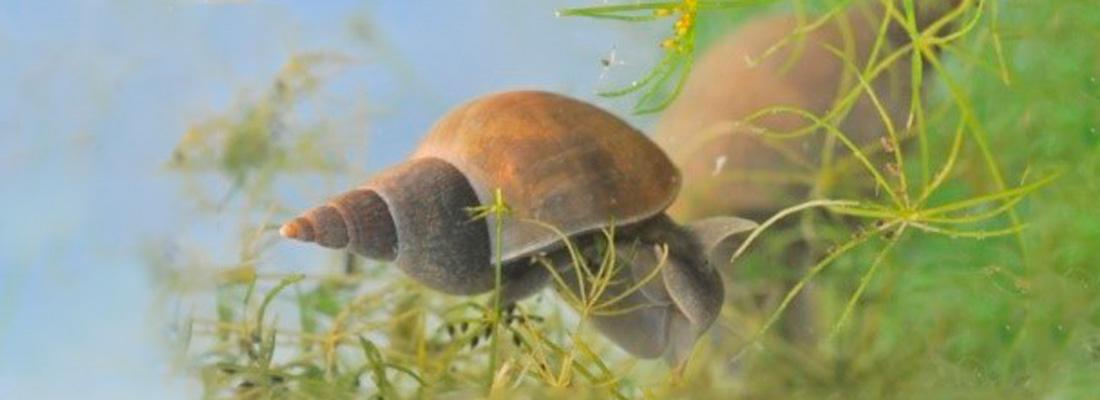Biodiversity Reading time 3 min
Sequencing the genome of the great pond snail, a step ahead in assessing the impact of pollutants on aquatic ecosystems
Published on 13 December 2024

The ability of animals to perceive and react to their environment is key to their survival and evolutionary fitness. This ability is based on a large diversity of molecular receptors, including G protein-coupled receptors (GPCRs). But the natural molecules which activate these receptors remain largely unknown.
Better understanding the mechanisms
By sequencing the genome of the great pond snail, the researchers discovered a considerable expansion of a sub-family of GPCRs. This expansion seems to be related to the evolution of simultaneous hermaphroditism in gasteropods. A phylogenetic analysis of this family family shows a remarkable expansion that coincides with the occurrence of this reproductive system in Euthyneura gastropods. What’s more, the fact that some of these receptors show qualitative differences of expression in female and male organs suggests that separate regulation of male and female reproductive processes may in part have been enabled by an increased abundance of these receptors in the transition from a separate-sexed state to a hermaphroditic condition.
A model for ecotoxicology studies
These findings obtained from sequencing the genome of the great pond snail reinforces its status as a model organism, which is already recognized in ecotoxicology and developmental biology to explore various key biological functions. But these findings also open up new prospects for understanding how pollution affects the biological processes of aquatic organisms such as reproduction, development or hormonal regulation.
Lymnaea stagnalis thus becomes a highly useful research model to evaluate the environmental impacts of pollutants and to help preserve aquatic ecosystems.
Reference:
Koene J. M., Jackson D. J., Nakadera Y. et al. (2024). The genome of the simultaneously hermaphroditic snail Lymnaea stagnalis reveals an evolutionary expansion of FMRFamide-like receptors. Scientific Reports, 14 (1). https://doi.org/10.1038/s41598-024-78520-1
